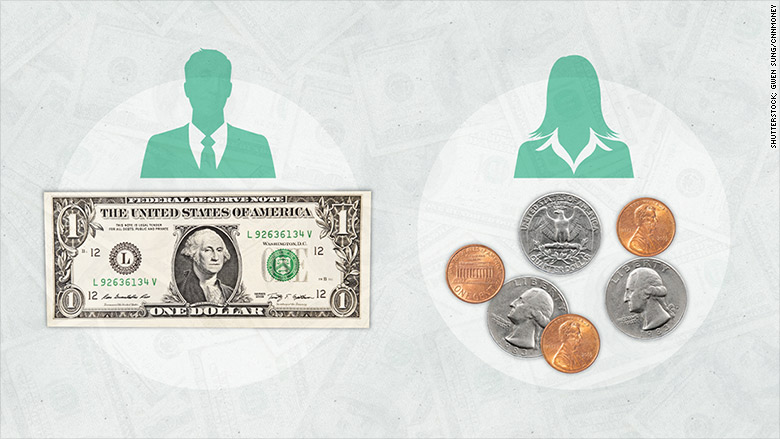On Average, Women are Making 78 Cents on the Dollar Compared to Men
This article appeared in the February 2016 issue of the print edition of THE TORCH as a part of the center spread feature titled “Gender Inequality Remains a Global Human Rights Concern.”
The incendiary issue of women’s rights has prevailed throughout the history of the United States, and although feminists have made impressive progress since their formation, many would argue that women have yet to come close to the equality that they deserve. This opinion is mainly manifested in the fact that, on average, a woman working the same job as a man with equal experience as the man, makes 78 cents to the man’s dollar.
Women face this pay gap in nearly every occupation. Even those who are highly experienced in large salary work (primarily in the health and business industries), are not safe from this discrimination. And it does not seem as if such a discrepancy is going away anytime soon. Statistics show that the gap has barely budged in a decade; at the current rate, it will not close for another 100 years, according the American Association of University Women (AAUW) website.
To reiterate, the 78 percent gap is the nation’s average. This percentage does not accurately reflect that while there are some women who make close to 90 percent of men’s wages (predominately Asian-American women), there are also many who face a much worse reality: minorities. African-American women make 63 cents to the white man’s dollar, and Latin American women make a mere 54 cents to the white man’s dollar, according to the AAUW.
Race isn’t the only factor that is not portrayed in the 78 percent average, as age plays a major role in wage-gap differences as well. Earnings for both men and women tend to increase as they get older, and with this, the pay gap also tends to lengthen. Differences in pay between older workers are considerably larger than those among younger workers; until the age of 35, women typically earn about 90 percent of men’s pay, but for the rest of their lives afterwards, this percentage drops to between 76 and 81 percent on average the AAUW reports.
When it comes to attempting to solve this immense problem, many believe that it is a matter of education, and that women can advance themselves through higher level schooling. This proves to be an invalid assumption. At each and every level of academic achievement, women’s earnings are consistently less, and in some cases, the gap in pay is actually at its highest in advanced levels of education.
For example, in the case of two high school diplomas, women make 77 percent of men’s salaries. However, in the case of an advanced degree, higher than a bachelor’s degree, women tend to make only 74 percent in comparison, according to the AAUW. So, while education does increase women’s earnings, it increases men’s earnings even more, making further education an impossible solution to gender pay inequality.
For those women who do fight for competitive college degrees, there is one area where they are on equal standing with men: their college debt. Not only does their hard work not make them equivalent to men who put in just as much time and effort, but it also results in them taking longer to rid themselves of the debt they acquired to get them to where they are.
Taylor Pittman writes on Huffpost Women that studies have even found that unequal pay can be linked to women’s depression and anxiety. While previous studies have proven that women have always been more susceptible to these mental health issues, researchers tested the wage gap in an attempt to find causation.
In an interview test for MDD (major depressive disorder) and GAD (generalized anxiety disorder), women who made less than men are twice as likely to suffer depression, and four times as likely to suffer anxiety. In cases in which the women were paid equally or more than their male counterparts, the results showed no significant differences between the men and women in regards to depression or anxiety.
In today’s news, the wage-gap is currently playing a major role in the 2016 election, mainly on the Democratic side. Republican candidates have been fairly ignorant to the significance of pay inequality on women’s lives; for example, Ted Cruz has claimed that equal pay for equal work has “been the law for decades,” ostensibly ignoring the aforementioned details and percentages of this article. And while Donald Trump has proclaimed, “I respect women, I love women, I cherish women,” he has argued that women would make the same as men if they did “as good a job.”
As for the Democrats, however, Bernie Sanders and Hillary Clinton have been head to head on this issue. In the case of the Paycheck Fairness Act, a bill designed for equal pay for equal work, although Sen. Sanders voted in favor of it, Clinton took over as the main sponsor. To the bill’s opposition, Sanders stated: “If the U.S. Senate had 80 women rather than 80 men as it does now, [the] bill would pass immediately.”
Both candidates have made women’s rights a main aspect of their campaign. As Hillary Clinton is running to be the first female president of the United States, one could assume that she is stronger on the issue. However, while this is a matter of opinion, it should be noted that many women have turned to Sanders, feeling as if he is more dedicated to the issue – a seemingly ironic, yet possible truth.











